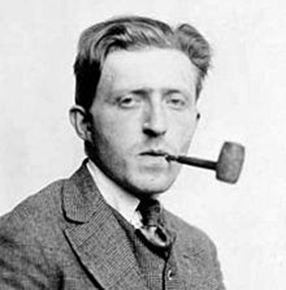Instructions for a Ballet
Raise the right foot—bound in sheer
Reasons of white and gold—
One inch from the black stage-floor.
Then perform these torpid words:
“Money is dangerous to men:
It shames the clearness of their thoughts.”
After thus accounting
For the loquacious smallness
Of those rare gifts that come from doubting men,
Tear the left foot vigorously
From the black grip of the floor,
And attend its nakedness
With this coronation of words:
“Money is emptiness
Curiously violated by colour.
Crown it with originality
That burns with careless discernment,
And amaze the limpid
Familiarity of Time.”
After thus accounting
For an improbable situation,
Abandon the farce and shrewdly
Tiptoe across the stage,
Peering down at your feet
And mistaking their lean mysteries
For possibilities in syncopation.
Having thus emulated
The tension of a psycho-analyst
Who confuses routines with causes,
Suddenly kneel upon the floor,
Limp with the collapse of sightless longing,
And raise one hand to the sky
While clenching on the other hand at your audience,
Thus expressing the thoughtful perturbations
Of Occidental religions.
Then dance across the stage,
Giving complex decisions to your legs
And interrupting the dance with a pause
In which you question its cumbersome cause.
Having thus defended
The broken rhythm of Western philosophers—
Sprinkled with a carnival of details—
Change the dance to a borrowed waltz,
Picking suave tricks from a harp
That lacks an ascending scale of notes,
And insisting that the result is music.
The end of the ballet should portray
A gradual sinking to the floor,
With plentiful whispers resenting
The final intrusion of Buddha.
This poem is in the public domain.

